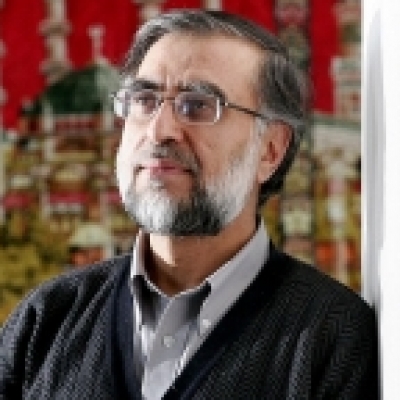



 Zafar Bangash
Zafar BangashPakistan launched its golden jubilee celebrations by a radio and television address by prime minister Nawaz Sharif at one minute past midnight on August 14. Then there was flag-hoisting ceremony at the parliament building attended by the country’s top brass while the people rejoiced in the streets waving flags and releasing thousands of balloons. Later in the day, Sharif accompanied by president Farooq Leghari laid a wreath at the mausoleum in Karachi of Muhammad Ali Jinnah, popularly known as Quaid-e Azam (the great leader) by the people.
But there was something missing. One could not help feeling that there was little to celebrate. Over the past three weeks, newspaper headlines had given a dismal picture of economic failures and rising social and political tensions. The most serious of these was the daily death toll in both Karachi - the main industrial city - and Punjab, the largest province.
The Karachi mayhem has been going on for more than a decade. There, the Muhajir Qaumi Movement (MQM) now renamed Muttaheda Qaumi Movement, has wreaked hevoc despite sharing power in the province. MQM terrorists who had been apprehended by the previous government are now on the loose hunting those police officers whom they blame for causing them discomfort. The police force is thoroughly demoralised. A number of them have been shot dead.
If the Karachi violence is ethnically-based, the killings in Punjab have been given a sectarian twist. But this would be a gross over-simplification of the true state of affairs. A number of factors point to foreign, especially American and Indian, involvement in the killings. There have been at least 150 killings in Punjab this year, 50 of them in the first two weeks of August alone.
Two groups are at each other’s throats: Sepah-e Sahaba Pakistan (SSP), a Sunni outfit, and Sepah-e Muhammad, a Shia group. That any Muslim would kill fellow Muslims in the name of the Sahaba or the Prophet is outrageous. But the killings are not about logic or religion; they are part of a larger plan to destabilise Pakistan and to poison its relations with Iran. Both the US and India benefit from such a policy.
Pakistani officials have accused India of involvement in the Punjab killings. Minister of State for foreign affairs, Siddique Kanju said in Sydney, Australia on August 11 that India was behind the sectarian violence in Punjab. No politician has had th courage to name the US, the real culprit.
Last May Ashraf Marth, a senior police officer in Gujranwala, was shot and killed by the Sepah-e Sahaba. Marth was no ordinary police officer. He was not only related to the country’s interior minister but he had also apprehended the culprits responsible for the bomb explosion at the Iranian cultural centre in Multan a month earlier. Eight persons including the Iranian cultural attache, Agha Rahimi, were killed.
What Marth had discovered was the real hand behind the SSP. He recovered from the culprits a number of weapons, thousands of US dollars in cash, credit cards issued by US banks with limitless withdrawal privileges and a diary with names and phone numbers of American contacts. Soon thereafter, Marth started receiving threatening phone calls. He got himself transferred from Multan to Gujranwala. But death followed him there as well.
Clearly, there are forces more powerful than the regime that can carry out such brazen acts of terrorism and get away with it. While the regime is scared to name America for these horrible crimes, the masses have no such illusions.
Among the Pakistani masses, America is the most hated country in the world. The Americans also know this. They have closed all their consulates in Pakistan, aware that the masses can react in unpredictable ways. Americans are not the bravest people in the world. In fact, they are real cowards.
While they accuse others, they themselves are involved in terrorism in Pakistan. So hated are they by the people that if a dog were to bark at an American official in Pakistan, the masses would immediately proclaim it a hero.
The US-Pakistan love-hate relationship reflects the country’s dilemma. The ruling elite are beholden to the US; the masses hate it with a passion. Even while the Americans continue to destabilise the country, the military maintains close contacts with it. Last month, two senior Ameican generals, Joseph Ralston and Binford Peah, descended on Pakistan and held highly publicised meetings with senior military and civilian officials.
It is reported that at least 1000 US commandos are operating in disguise in the tribal area of Pakistan. It is believed that their mission is to capture Osama bin Laden, the Saudi millionaire currently residing somewhere in the mountains of Afghanistan who has made little secret of his hatred of the US. After the Aimal Kansi saga, the people have no doubt about the story.
The military’s direct links with the US while Washington continues to insult and destabilise Pakistan is cause for concern. The military’s disporportionate consumption of the budget - in the last five years, it has consumed US$16 billion while the comparable figure for eduction has been less than $1 billion - indicates its stranglehold on the country’s resources. Of Pakistan’s 135 million people, at least 25 percent live below the poverty level. And the literacy rate is less than 25 percent.
These are hardly signs of a healthy state. Pakistan enters its next 50 years with crutches, crippled by a mountain of debt - $60 billion internal and external - and an economy that shows no signs of improvement, at least for the present.
Muslimedia - August 16-31, 1997
